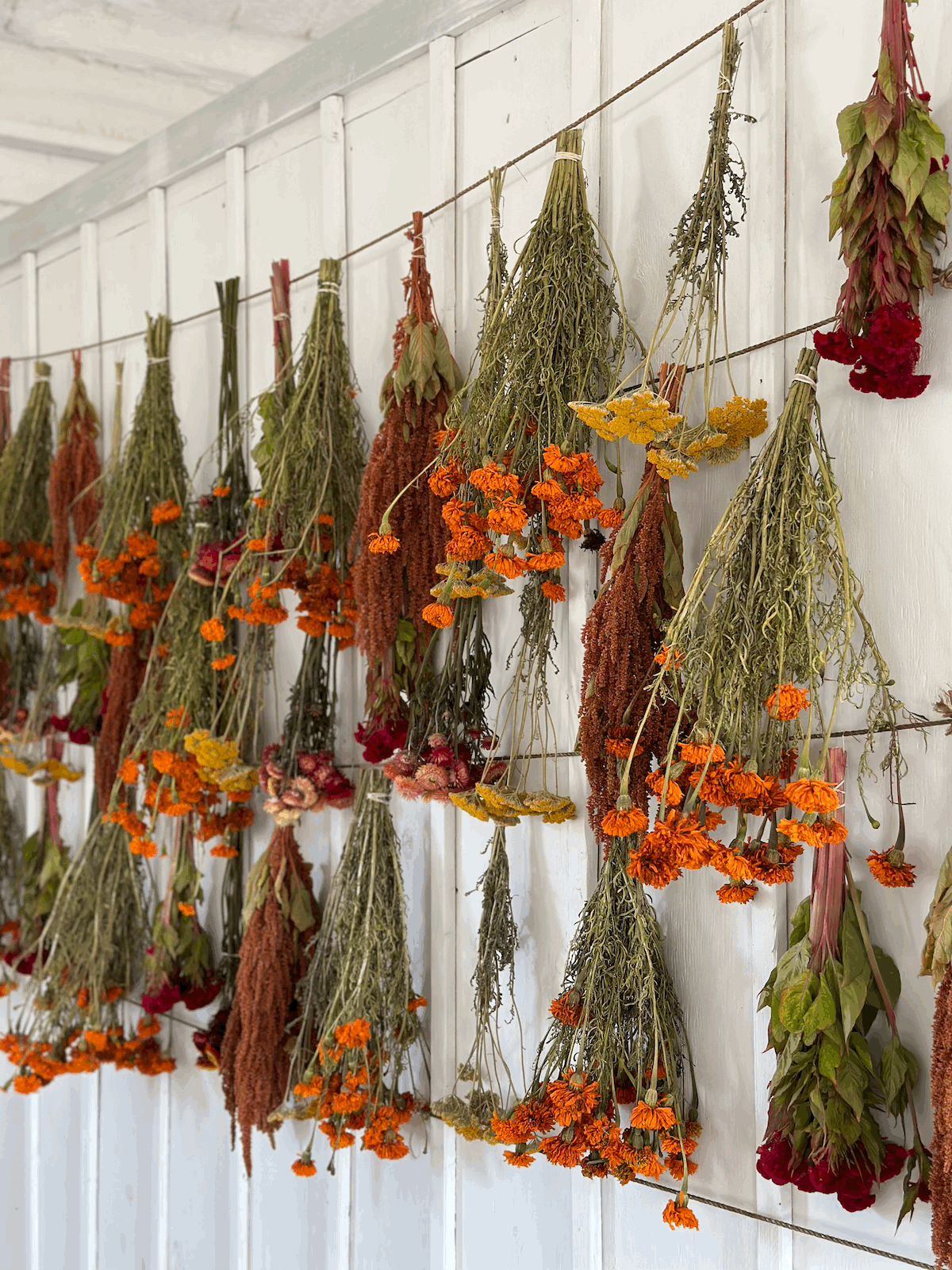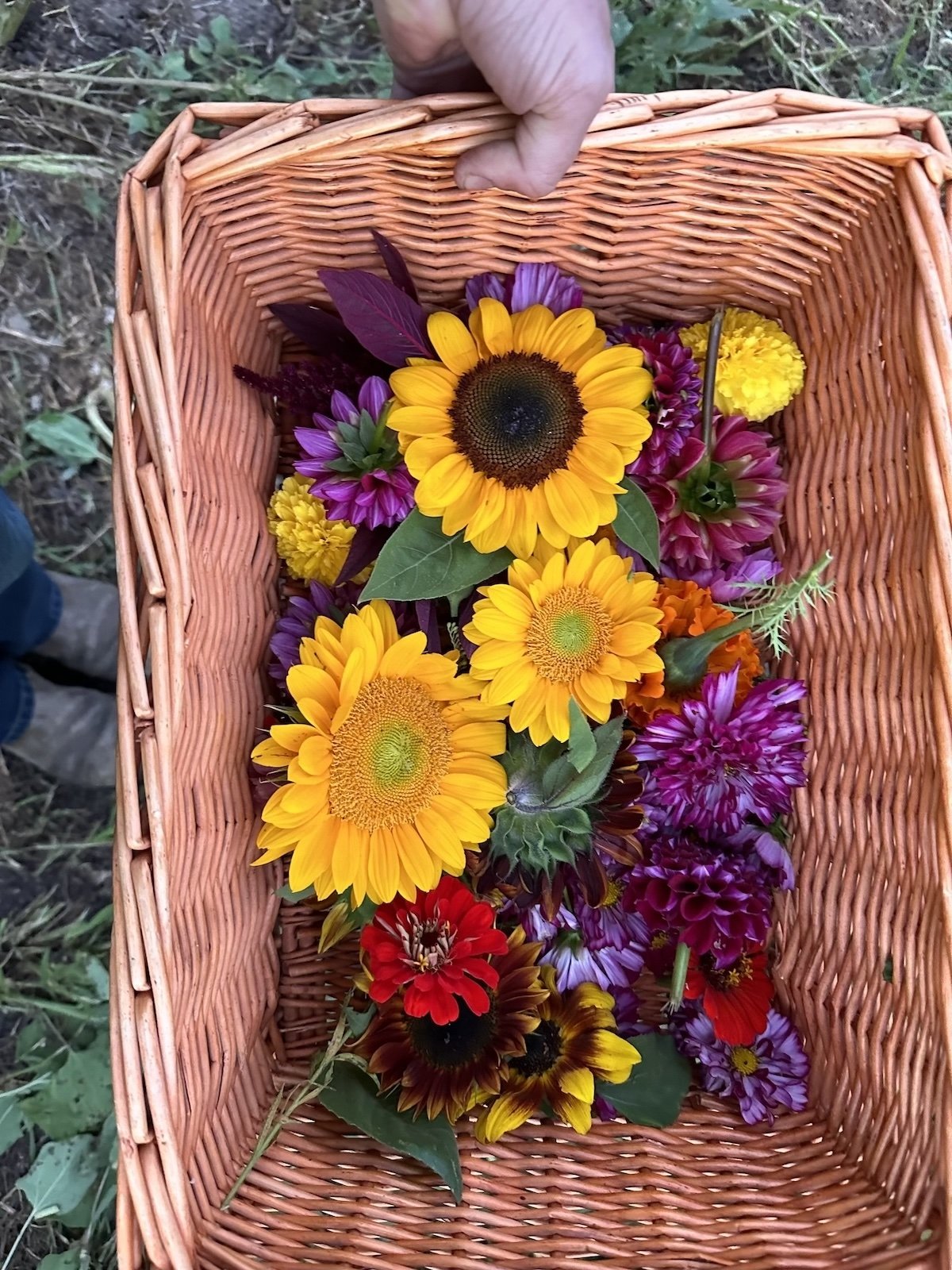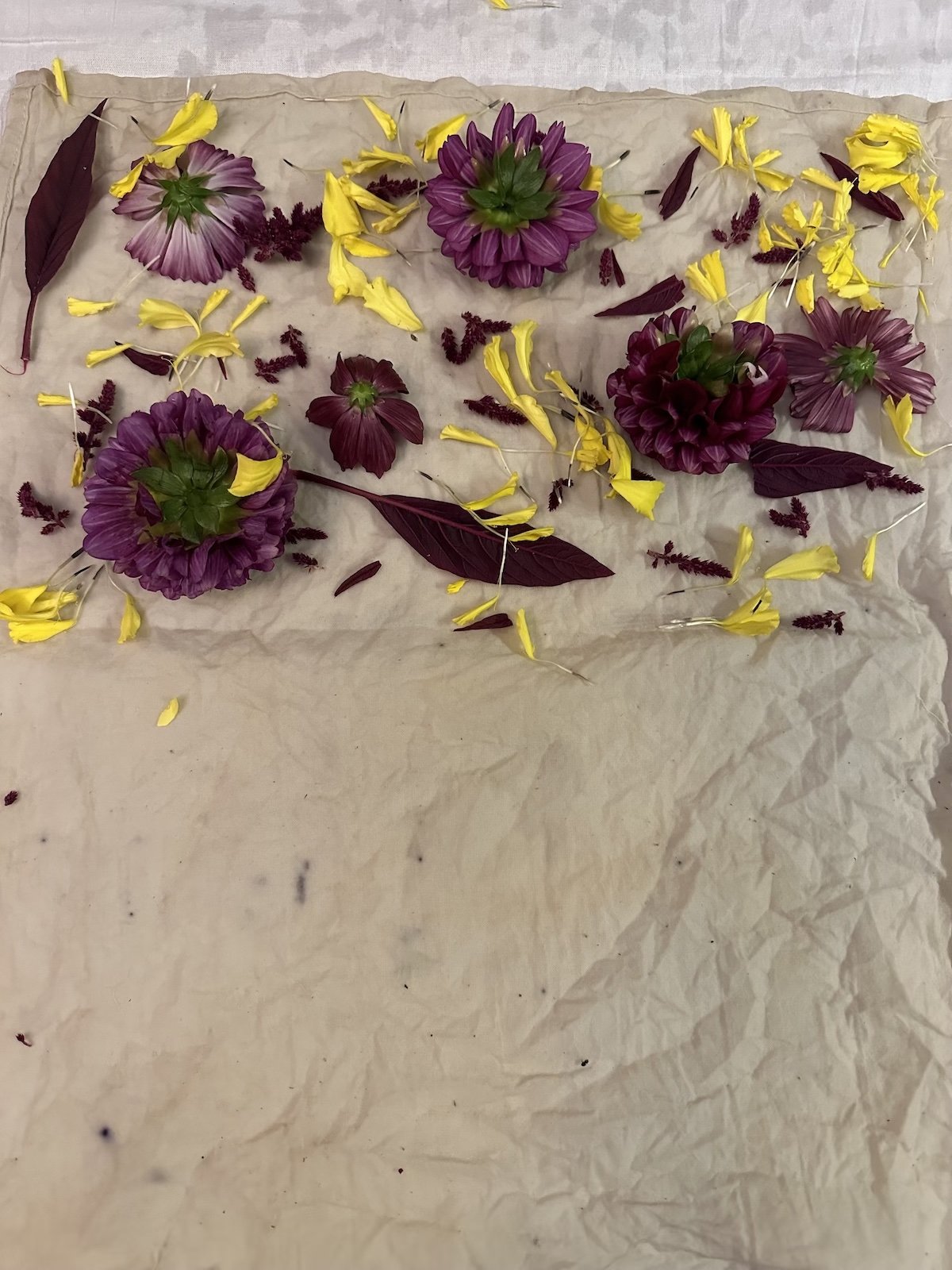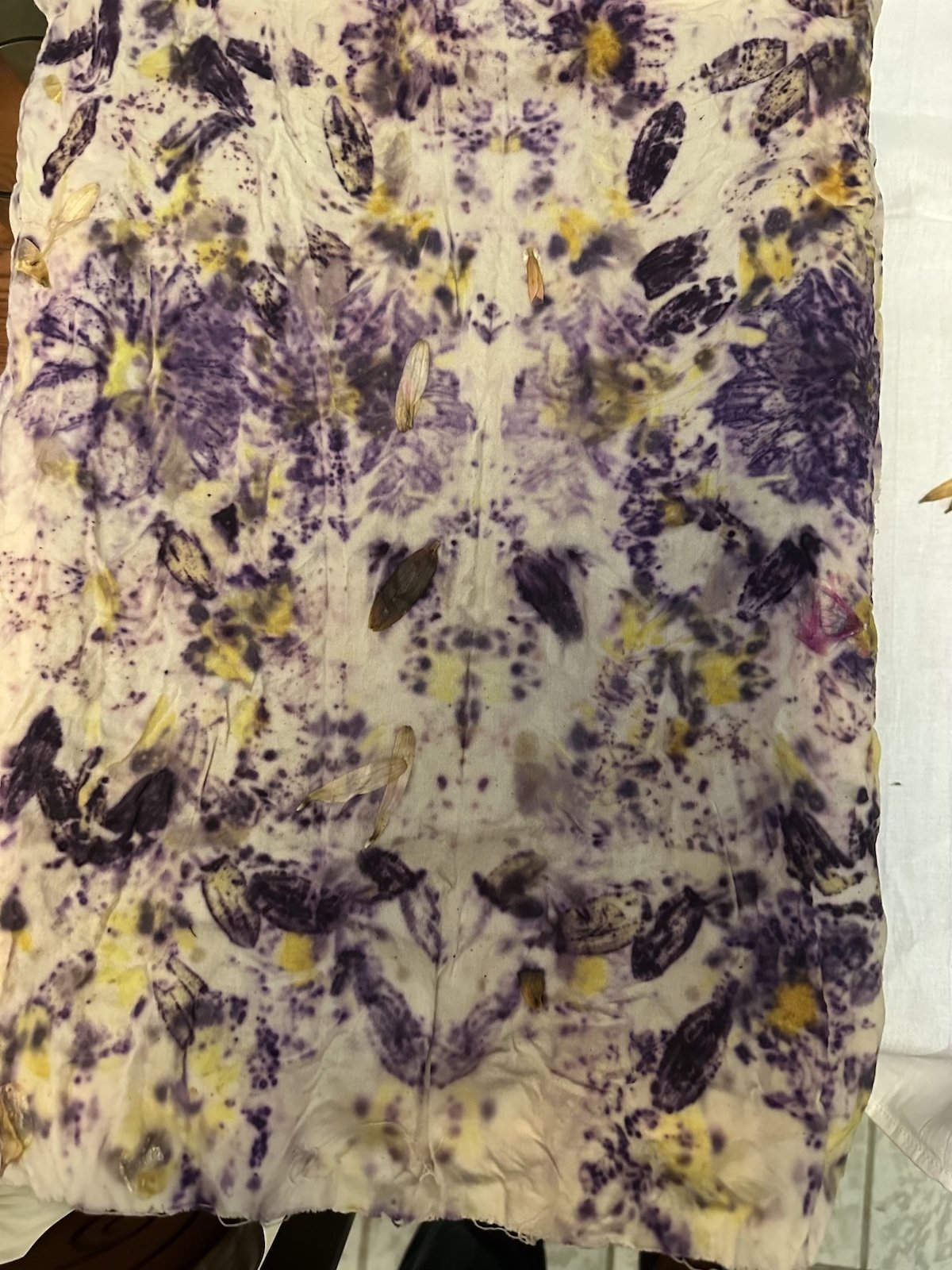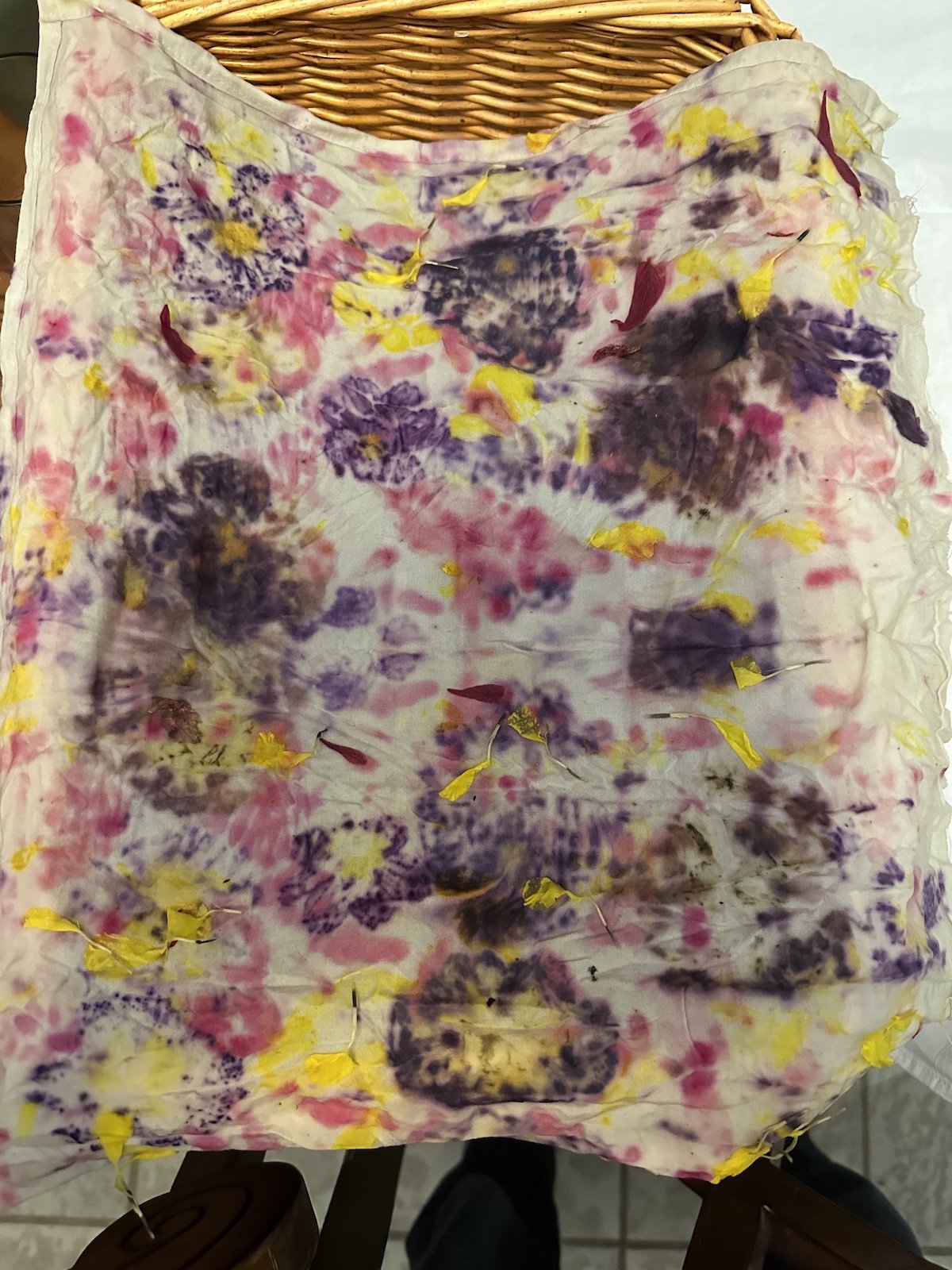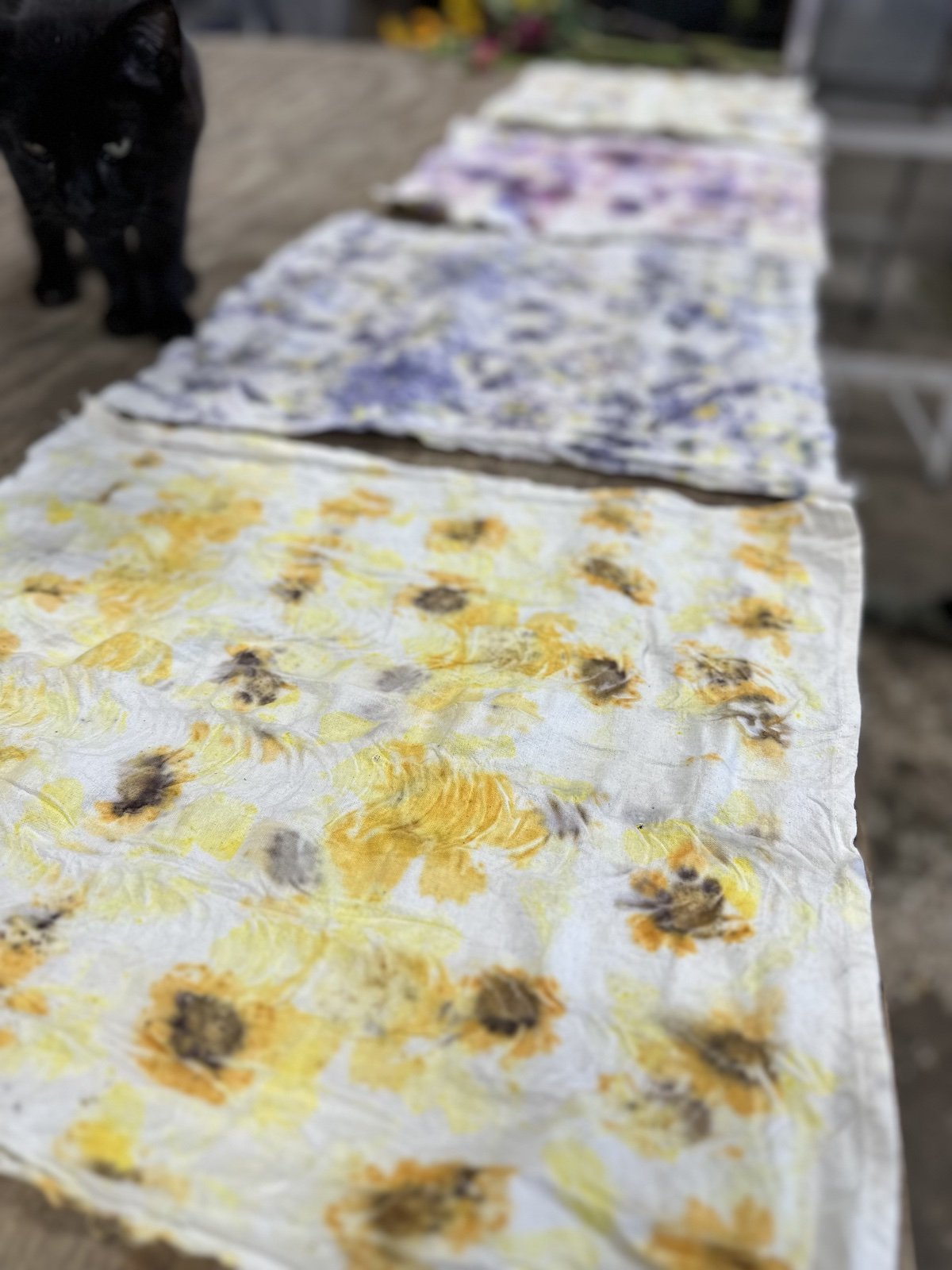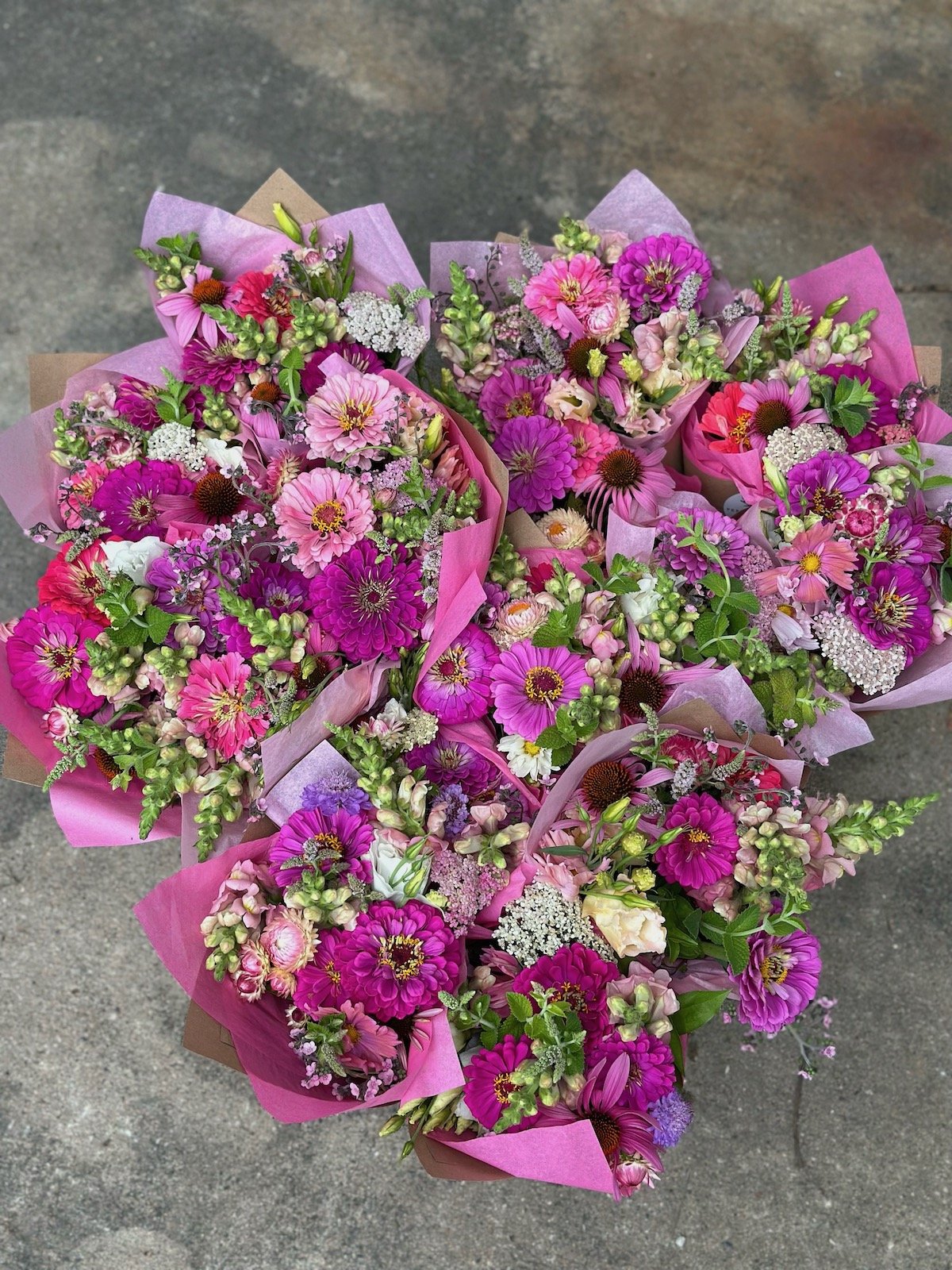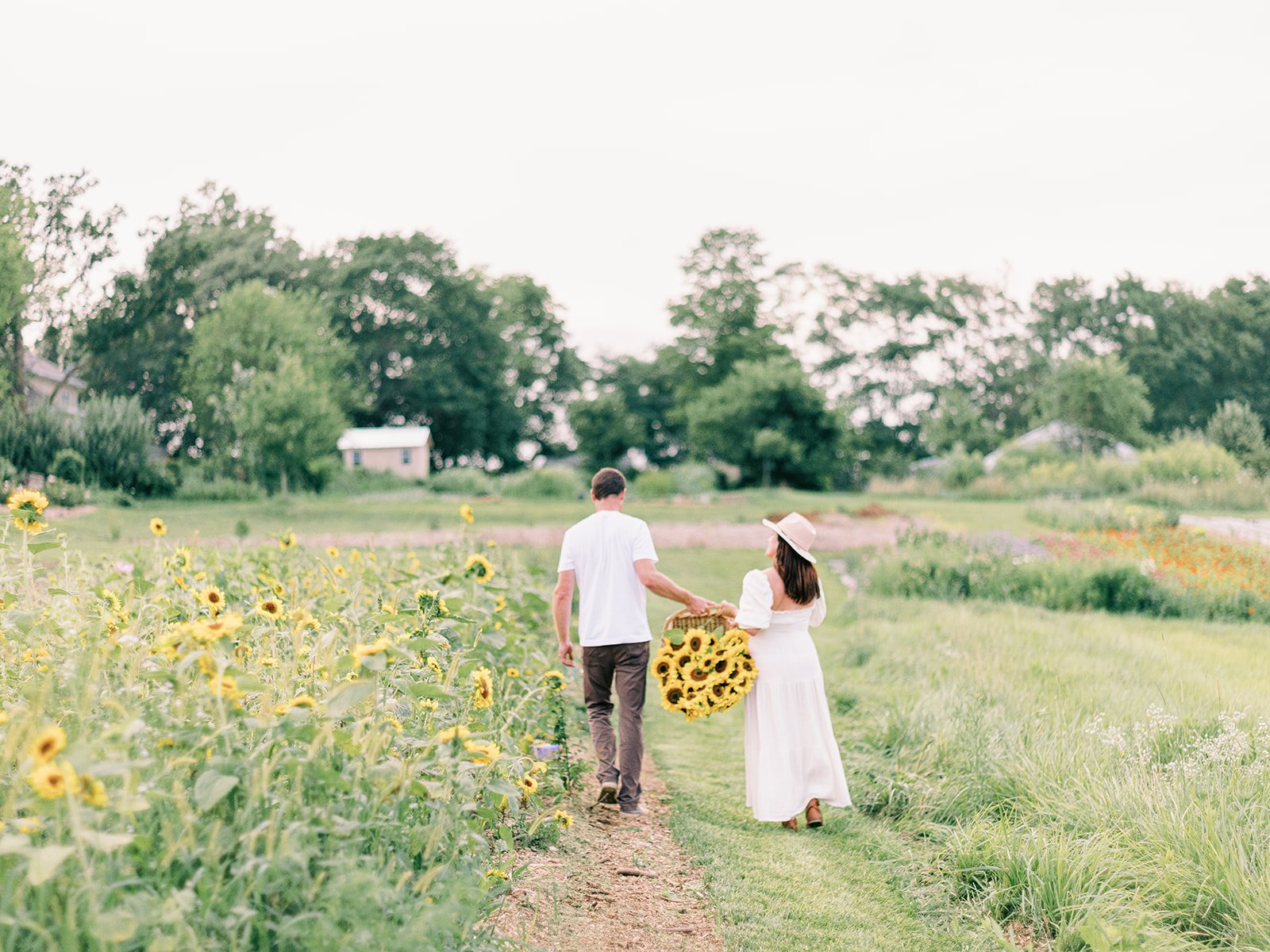
Everlasting Love! The 10 Best Dried Flowers for Your Home
In the world of home decor, dried flowers have staged a comeback, offering timeless charm and low-maintenance beauty. Explore our top 10 dried flowers, from the soothing lavender to the dramatic larkspur, perfect for elevating your living spaces with lasting elegance. Discover the versatility and lasting appeal of these dried blooms that effortlessly enhance the aesthetics of your home, providing a touch of nature that stands the test of time.
In the world of interior design and home decor, dried flowers have made a triumphant comeback. These timeless beauties not only add a touch of nature to your living space but also offer a unique charm that fresh flowers can't provide. Dried flowers are versatile, low-maintenance, and have a long shelf life, making them a fantastic choice for any home. Today, we'll explore the 10 best dried flowers that will effortlessly elevate the aesthetics of your living spaces.
Lavender
Lavender, with its soothing fragrance and vibrant purple hues, is a classic choice for dried flower arrangements. Its calming aroma can help reduce stress and anxiety, making it an excellent addition to bedrooms or relaxation spaces.
Amaranth
Amaranth is a striking dried flower known for its unique, flame-shaped blossoms that come in vibrant shades of red, orange, and purple. This dramatic flower symbolizes immortality and unfading love, making it a popular choice for dried flower arrangements. Amaranth adds a touch of exotic beauty and can be used to create eye-catching focal points in your decor.
Celosia
Celosia, also known as the "cockscomb" due to its distinctive shape, is a captivating dried flower that resembles vibrant, velvety crests. These flowers come in a variety of colors, including rich reds, deep purples, and vivid oranges. Celosia's bold and whimsical appearance makes it an excellent choice for adding a playful, artistic touch to your dried flower arrangements, making them stand out in any room.
Gomphrena
Gomphrena, often referred to as "Globe Amaranth" or "Bachelor's Button," is a charming and long-lasting dried flower. These petite, spherical blooms come in a range of vibrant colors, including shades of pink, purple, white, and red. Gomphrena is celebrated for its resilience and ability to maintain its shape and color when dried, making it an excellent choice for crafting wreaths, garlands, and everlasting floral arrangements. We used these beauties to create a gorgeous dried flower wall, shown below.
Statice
Statice flowers come in a range of colors and are known for their longevity. They make for excellent dried flowers because they retain their vibrant hues and add a pop of color to your home decor.
Sunflowers
Sunflowers bring warmth and a touch of rustic charm to your interior. Their sunny disposition remains intact even after they are dried, making them a delightful addition to your home.
Marigolds
Marigolds are beloved for their cheerful, sunny disposition and their ability to thrive in various climates. While they are most commonly associated with gardens and landscapes, these vibrant flowers can also be beautifully preserved as dried blooms. Drying marigolds allows you to capture their intense shades of orange and yellow, ensuring they maintain their striking appearance throughout the year.
Strawflower
Strawflowers, with their paper-thin petals and vivid, everlasting colors, are a delightful choice for dried flower arrangements. These flowers come in an array of hues, including shades of pink, white, yellow, and red. One of the unique features of strawflowers is their ability to retain their vibrant color and shape when dried, making them a sought-after addition to wreaths, bouquets, and crafts.
Strawflowers are often used in floral arrangements to add texture and a pop of color. Their petals are sturdy and papery, giving them a timeless quality that can be enjoyed for years. Incorporating strawflowers into your decor brings a touch of whimsy and a burst of color, making them an excellent choice for both traditional and contemporary interior styles.
Goldenrod
Goldenrod, with its bright yellow plumes of tiny flowers, is a symbol of abundance and positivity. While often found in gardens and meadows, goldenrod can also be preserved as dried flowers to add a touch of sunshine to your home. These feathery blossoms can be dried and used in various ways, from floral arrangements to wreaths.
The cheerful color of goldenrod is perfect for creating a welcoming and cheerful atmosphere in any room. Whether displayed on its own or combined with other dried flowers, goldenrod infuses your decor with the warmth and optimism of a sunny day. Its resilience and timeless appeal make it a fantastic choice for adding a touch of nature's beauty to your living spaces, year-round.
Larkspur
Larkspur offers tall, dramatic spikes of color that add a touch of drama to any dried flower arrangement. They come in a range of shades, making it easy to find the perfect match for your decor.
From the calming scent of lavender to the vibrant, colorful charm of larkspur, these ten best dried flowers offer a wide range of options to suit any style and preference. Whether displayed in bouquets, wreaths, or shadow boxes, dried flowers are a wonderful addition to any living space, bringing a sense of natural beauty that lasts indefinitely.
XX Jenn and Adam
Using Flowers to Create Botanical Based Dyes
Explore the enchanting world of flower-based dyes. Discover the magic of marigolds, lavender, coreopsis, cosmos, dahlias, and indigo leaves, each offering a unique color palette for your creations. From selecting the right flowers to unveiling the vibrant hues after the dyeing process, immerse yourself in the art of botanical dyeing and embrace the charm of nature's diverse colors on your fabrics.
The Charms of Botanical Dyeing
Botanical dyeing takes us back to simpler times, using the colors nature provides. It's like a plant-based paint palette that can turn ordinary tea towels into works of art. By using flowers, we can create a rainbow of shades that are both unique and eco-friendly.
Picking the Right Flowers
One of the exciting parts of botanical dyeing is selecting the flowers to work with. Different flowers yield different colors, offering a playful twist to the process.
Marigold: These sunny blooms create warm yellows and oranges, reminiscent of a golden sunrise.
Lavender: If calming pastels are your preference, lavender flowers are perfect for gentle purples and grays.
Coreopsis: With their vibrant petals, coreopsis flowers bring about shades of cheerful yellows and deep oranges.
Cosmos: Bright Lights or Sulphur cosmos as the best for dyeing, but we’ve found that we love the colors created by some of the darker cosmos. They make a lovely purple or blue color.
Dahlias: Provide a variation of shades, but the darker colors make the prettiest colors.
Indigo: For rich blues, indigo leaves hold the secret, providing a touch of deep ocean hues.
The Color Journey
Before diving into the dyeing process, the fabric needs a bit of prep. This involves cleaning and treating them to make sure they absorb the colors well. Once fabric has been prepped, you leave it damp, but not wet and add your flowers for dyeing. We use the bundle dyeing process for making our prints, which involved scattering flowers on the fabric, rolling the fabric up, then using a steam process to release the dye from the flowers.
After the fabrics have steamed for an hour, remove and open the fabric. The colors from the dye process are immediately visible. Gently remove all flowers from the fabric, then give your fabric a little rinse and hang to dry.
Botanical dyeing isn't just about changing colors; it's about connecting with nature and embracing its diversity. Each fabric created with botanical dye carries a piece of the flower farm's charm, telling a story of petals, leaves, and the colors they gift us. So, next time you use one of these tea towels, remember the journey it has taken – from the flower farm to your kitchen, with a touch of nature's magic in between.
XX Jenn and Adam
Creating a Gorgeous Raised Bed Garden
Explore the simplicity and beauty of raised bed gardens with our guide. Perfect for any gardener, these beds offer controlled environments and easy maintenance. Learn the benefits, design tips, and step-by-step instructions to create your flourishing garden. Elevate your outdoor space with joy and ease. Happy growing!
If you're looking to add a touch of beauty and functionality to your outdoor space, raised beds could be the perfect solution. Whether you're limited on space or just starting out on your flower-growing journey, raised beds offer a fantastic way to cultivate a thriving garden right at your doorstep. At PepperHarrow, we've embraced raised beds as a key part of our dahlia breeding efforts, and as an integral space for relaxing and entertaining. Today, we're going to guide you through the process of creating your very own raised bed garden.
Why Raised Beds? Raised beds offer a range of benefits and hey, let’s not overlook their beauty, making them an excellent choice for both beginners and seasoned gardeners. They're particularly useful when your soil isn't ideal for flower growth, providing you with a controlled and enriched growing environment. Additionally, these beds are easier to maintain compared to open-field plantings. Weeding and tending to your plants become less of a chore, and watering is more convenient since raised beds are often closer to water sources. Keep in mind that raised beds require more frequent watering than plants in the ground.
Designing Your Garden
Before you roll up your sleeves to get to work, take the time to draw out and design your raised bed garden. Sketch out a plan on paper to plan out a space that works for you, allocating enough space between each bed to allow for 3-foot-wide paths. Staking out the corners of your garden area with wood and tying strings between the stakes can help you frame the space accurately and ensure its level.
Here are the Materials Required for the Beds We Created for our Eight 4-by-8-foot raised beds in a 30-by-40-foot area, gather the following materials for each raised bed:
(3) 2-x-12-x-8 treated lumber
(1) 4-x-4-x-4-inch treated lumber
(4) 6-x-6-inch steel corner braces
Additional Supplies:
200 feet of 6-foot or wider landscape fabric for weed barrier
100 Landscape pins to secure the fabric
160 3-inch exterior screws
48 2-cubic-foot bags of wood chips
160 1-cubic-foot bags of topsoil
500 pounds of chipped limestone road stone
Drip irrigation or overhead watering apparatus
Optional decorative arches for growing vines
Seeds of your choice!
Step-by-Step Guide for Building a Raised Garden:
Step One: Preparing the Ground
Draw your raised bed plan on paper, considering the layout and spacing.
Stake each corner of your designated area using wood and tie strings between the stakes to outline your space and ensure it's level.
Lay down landscape fabric as a weed barrier.
Step Two: Creating the Base
Spread gravel evenly across the entire area using a landscaping rake.
Prepare the lumber, using 8-foot boards for the sides and cutting an 8-foot board in half to form two 4-foot ends.
Step Three: Assembling the Bed
Use your drill and screws to secure the lumber at the corners, utilizing the 4-x-4-inch lumber as braces.
Step Four: Adding Growing Medium
Lay six bags of wood chips in the bottom half of each raised bed, smoothing them out with the landscaping rake.
Finish by adding 20 bags of topsoil to fill the beds to the top. Keep in mind that the soil will settle over time, so you may need to add more before planting.
Sparkle Details =Dream Space
The last step is to add pieces that make your raised bed garden sparkle. Items like arches for growing vines, bistro lights, table and chairs are great things to add to really make the space inviting. All of this you can use for hosting guests, or for your own personal enjoyment.
By following these steps and using the materials mentioned above, you'll be well on your way to creating a beautiful and functional raised bed garden, just like the ones at our flower farm! As you tend to your flowers and watch them thrive, you'll appreciate the benefits of raised beds, from improved growing conditions to easier maintenance.
Whether you're an aspiring gardener, dahlia breeder or simply passionate about cultivating a beautiful flower garden, raised beds provide an excellent foundation for your gardening endeavors.
Happy growing!
XX Jenn and Adam
Midsummer Bouquet Inspiration!
Experience the beauty of summer with our stunning bouquet combinations, from the mesmerizing Flowers & Sunset blend to the whimsical Barbie Bouquet. Discover the art of crafting CSA bouquets and explore the allure of Garden-inspired arrangements. Join us on a floral journey, whether you're a seasoned flower farmer or a budding enthusiast. Let your creativity bloom this summer!
As the radiant sun reaches its peak in the sky, nature rewards us with a breathtaking display of its finest artistry - the blossoming of vibrant blooms! In this midsummer enchantment, our world transforms into a gorgeous quilt of many colors, fragrances, and textures. As we immerse ourselves in this floral wonderland, we can't help but be inspired to create extraordinary bouquets that capture the essence of this wondrous season.
Whether you're a seasoned flower farmer, flower enthusiast, or just starting to explore the joys of floral arrangements, we've gathered an array of stunning bouquet combinations to awaken your creativity and bring your vision to life. Let's embark on a floral journey together and craft delightful compositions that embody the spirit of summer's boundless beauty!
We love using all of the best seasonal flowers grown from our flower farm to add to bouquets, but most often, we tend to gravitate towards a lot of pink and orange or pink and purples for our bouquet combinations. The bouquet above contains zinnias, yarrow, tweedia, snapdragons, bishop’s lace, strawflower, scabiosa, forget me not, lisianthus, and salvia.
Barbie Bouquets
When our employee was making grocery bouquets she said, “This bouquet reminds me of Barbie,” and it’s from that small comment, that the Barbie Bouquet was born.
We took these to farmer’s market, lined with special pink tissue paper and sold every last one. It’s easy to see why! We love pink and so do our customers!
CSa Bouquets for our July customer pick up
CSA bouquets are made with as many special flowers from the farm as we can muster. We save back and use as much of our best flowers as possible to treat our CSA customers, because they’re pretty special customers. CSA stands for Community Supported Agriculture. Our CSA customers make an investment with us early on, even before our season has started, to provide a bouquet each second Saturday May-September. Their investment early on helps us fund seeds and plants to grow these special flowers for them each month.
The bouquets above contain some of the first blooming zinnias, snapdragons, apple mint, ammi, strawflower, scabiosa, and blue glob thistle. The blue globe thistle is our favorite and one we’ve been nurturing since last year, just to have them for these special bouquets.
When deciding on a recipe for our flowers, we try to stick to something simple, instead of trying to recreate the wheel. We have 20 CSA members that we make bouquets for, so we try to use flowers we know we can repeat and scale for this many bouquets. For example, if we know there are going to be 3 zinnias in every vase, we try to cut 60 zinnias of the same color just for these bouquets. There’s always a little variability in this area, notice some of these bouquets above have orange snapdragons and others have white. You can deviate from your recipe and work with what you have.
Garden inspired. It’s a term that we use to define the different types of flowers we use in our bouquets. We think what defines this look is many different types of botanicals incorporated into a bouquet in a cohesive color scheme.
In the bouquet above, we strolled through our flower gardens and cut as many types of flowers right before a beautiful sunset to include in this beautiful bouquet. One of our favorite new flowers we grew this year was Queen Lime Orange Zinnias, which you can see in this example. They’re on the shorter side from flowers we typically grow, but they’ve been a popular flower with our market customers, you-cut guests, and a personal favorite of ours as well. In particular, we love adding a light blue and white pop of color with these beauties, because they compliment well and give a bouquet an old fashioned feeling. So pretty!
Different flowers included in the bouquet above: zinnias, tweedia, cosmos, ageratum, snapdragons, scabiosa, statice, yarrow, and applemint.
Wrapped Jar bouquets
Our customers near and far absolutely love our wrapped jar bouquets. We bring these pretty bouquets to farmer’s market, and sell them directly on the farm each weekend. Our customers tell us that they look for our signature black and white ribbon each weekend and know we’re at the market when they see people walking around with our bouquets. Some actually track us down after they see others carrying around our bouquets!
For these cuties, we allow for a little more creative freedom instead of sticking to a certain recipe, well, kind of anyway. We’ll usually make 3-5 at the same time and all 3-5 will have the same basic recipe. What we’ve found at our local farmer’s market is that people want the ability to pick and like it when there are different color combinations to choose from, so we like variability in the recipe.
If you want to check out our online tutorial about how we make these pretty bouquets, you can access that here.
We hope you found these bouquet combinations inspiring! Each petal and leaf, carefully curated and placed, is a testament to the boundless beauty that surrounds us. Let your heart be your guide, and may your future bouquets be an expression of your own unique artistry.
XX Jenn and Adam
Best Ever! Homemade Lavender Lemonade Recipe
Indulge in the ultimate summer refreshment with our sought-after lavender lemonade recipe. Immerse yourself in the soothing scent of hand-harvested lavender, carefully blended with the zesty tang of lemons. Bring the magic of our farm into your home with our culinary lavender or lavender simple syrup kit. Craft a beverage that captivates your taste buds and leaves you longing for more. Cheers to the perfect summer sip—homemade lavender lemonade!
Close your eyes and step into a world where the soothing scent and taste of lavender mingles harmoniously with the zesty tang of lemons, creating a beverage that is as visually appealing as it is refreshing. Today, we’re proudly sharing our highly sought after lavender lemonade recipe.
We take so much pride in growing high-quality lavender varieties that are hand-harvested at the peak of their bloom. Each blossom is carefully selected, ensuring only the most aromatic and vibrant flowers make it into our products. To bring a touch of our farm's magic into your own home, here’s a link to purchase our culinary lavender, or lavender simple syrup kit, allowing you to savor lavender’s essence in various culinary creations, including this lavender lemonade recipe.
Grab your favorite glass and get ready to experience refreshing lavender lemonade. We hope this recipe hleps guide you perfectly through creating a beverage that will captivate your taste buds and leave you longing for more. It's time to indulge in the ultimate summer refreshment—homemade lavender lemonade!

